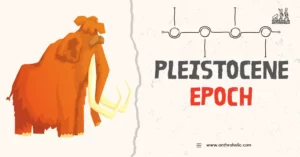AI Answer Evaluation Platform Live Now. Try Free Answer Evaluation Now
Cell Division
The essence of life is intricately connected to the continuous cycle of growth and development, with cell division forming the foundation of this seemingly infinite journey. As a cornerstone of biological processes, cell division is instrumental in enabling living organisms to survive, thrive, and evolve. The process not only facilitates the replication of genetic material, but also plays a crucial role in the repair and maintenance of cells. In this article, we will delve into the nuances of cell division, examining its various stages, types, and importance to the living world.

The Fundamentals of Cell Division
Cell division is a complex yet orchestrated series of events that culminates in the production of two daughter cells from a single parent cell. These daughter cells possess identical genetic material, ensuring the accurate transmission of hereditary information. The primary types of cell division are mitosis and meiosis, which cater to different biological functions and organisms.
Mitosis
Mitosis is the process of nuclear division in eukaryotic cells that results in two genetically identical daughter cells. It is essential for growth, development, and repair in multicellular organisms, as well as reproduction in single-celled organisms.
The Stages of Mitosis
- Prophase
- Metaphase
- Anaphase
- Telophase
Meiosis
Meiosis is a specialized form of cell division that produces gametes (sperm and egg cells) in sexually reproducing organisms. It consists of two consecutive cell divisions—meiosis I and meiosis II—resulting in four non-identical daughter cells, each containing half the number of chromosomes as the parent cell.
The Stages of Meiosis
- Prophase I
- Metaphase I
- Anaphase I
- Telophase I
- Prophase II
- Metaphase II
- Anaphase II
- Telophase II
The Significance of Cell Division
The process of cell division is integral to the survival and reproduction of living organisms. From the microscopic level of cellular growth to the macroscopic perspective of organismal development, cell division serves as a vital link in the chain of life.
Growth and Development
Cell division is the primary mechanism driving the growth of organisms, as it enables the production of new cells to replace old or damaged ones. The process ensures the maintenance of tissues and organs, while also facilitating the repair of injuries.
Reproduction
In single-celled organisms, such as bacteria and protists, cell division (specifically, binary fission or mitosis) is the primary mode of reproduction. In sexually reproducing organisms, meiosis generates gametes with half the genetic material, allowing for the combination of genetic information from two parents during fertilization.
Genetic Diversity
Meiosis introduces genetic variation through two key mechanisms: crossing over and independent assortment. This diversity is crucial for the survival of species, as it promotes adaptability and resilience in changing environments.
| Characteristic | Mitosis | Meiosis |
|---|---|---|
| Purpose | Growth, repair, asexual reproduction | Sexual reproduction |
| Number of Divisions | One | Two |
| Daughter Cells | Two | Four |
| Chromosome Number | Diploid (2n) | Haploid (n) |
| Genetic Composition | Identical to parent | Unique (non-identical to parent) |
Conclusion
Cell division is a remarkable biological process that under lies the foundation of life itself. From enabling growth and development to driving reproduction and genetic diversity, cell division serves as a critical link in the complex web of biological systems. Understanding the intricacies of cell division not only provides insights into the fundamental aspects of life, but also holds the potential to unlock new avenues for medical advancements and biotechnological innovations. As researchers continue to explore the enigmatic world of cellular processes, our comprehension of the intricacies of cell division will only deepen, shedding light on the remarkable mechanisms that govern life at its most fundamental level.
References
- Alberts, B., Johnson, A., Lewis, J., Raff, M., Roberts, K., & Walter, P. (2014). Molecular Biology of the Cell (6th ed.). Garland Science.
- Lodish, H., Berk, A., Zipursky, S. L., Matsudaira, P., Baltimore, D., & Darnell, J. (2000). Molecular Cell Biology (4th ed.). W. H. Freeman.
- Sadava, D., Hillis, D. M., Heller, H. C., & Berenbaum, M. (2014). Life: The Science of Biology (10th ed.). Sinauer Associates.
- Wolpert, L., Tickle, C., & Martinez Arias, A. (2015). Principles of Development (5th ed.). Oxford University Press.



